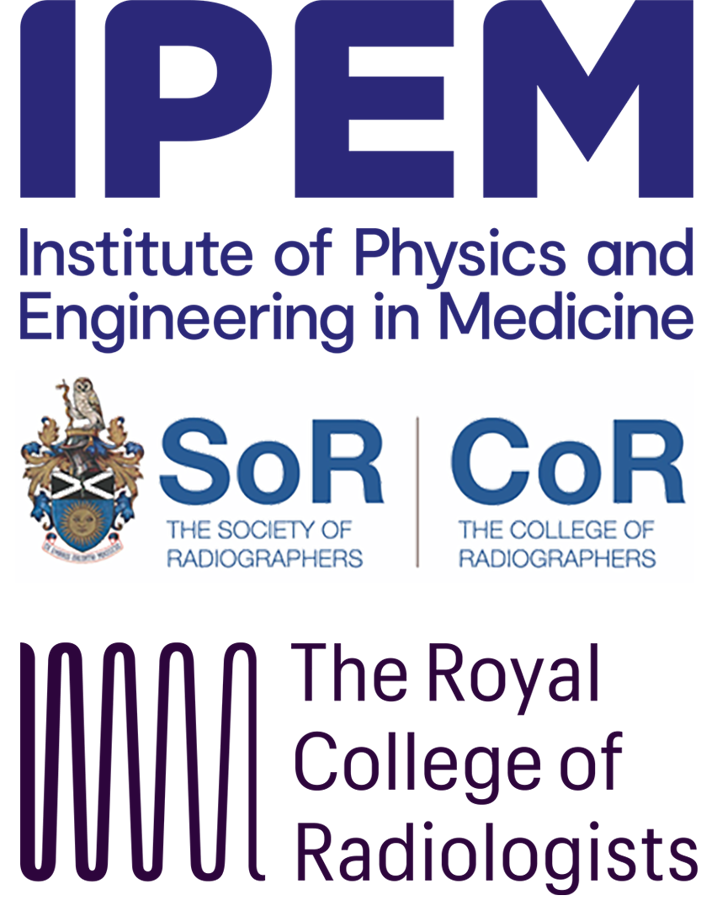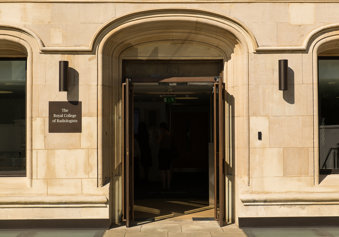Three professional bodies – The Institute of Physics and Engineering in Medicine (IPEM), The Royal College of Radiologists (RCR) and the Society and College of Radiographers (SCoR) – came together in 2013 to establish the Radiotherapy Board. The Board provides an ongoing forum to support the development of national radiotherapy services, continuing the work of the National Radiotherapy Implementation Group (NRIG). The aim is to ensure the ongoing delivery and development of high quality radiotherapy services for cancer patients.
The Radiotherapy Board operates on a UK-wide basis, reflecting the geographical remit of the three professional bodies. However, the three professional groups are, in addition, represented on the Radiotherapy Clinical Reference Group (CRG), a strategic body which is part of NHS England.
Purpose/remit
The main purpose of the Radiotherapy Board is to provide guidance, oversight and support for the continuing development of radiotherapy services in the UK.
Strategic tasks will include:
- Co-ordinating work at national level to support delivery of services locally
- Advising on the development and delivery of safe, high-quality radiotherapy services
- Working collaboratively with other groups and organisations across the UK involved in the delivery of radiotherapy services
- Developing a strategy and structure for workforce planning and training, and for professional standards
- Supporting and encouraging research in radiotherapy, by working collaboratively with the research community
- Commissioning individual pieces of work as required.
Operation of the Radiotherapy Board
Each of the three professional bodies hosts the Radiotherapy Board for two years, with the host body providing the Chair. In the year preceding and the year following a change of chair, the relevant professional body will nominate an individual to serve as Vice-Chair of the Radiotherapy Board.
The duration of the term of the Chair will be reviewed once in every cycle of rotation.
Administrative support for meetings is provided by the RCR but is supported equally by the three professional bodies.
Membership
The Board will draw its membership from the three professional bodies most closely involved in the planning and delivery of radiotherapy services. Additional members may be co-opted as required.
Members
- Two representatives of the Institute of Physics and Engineering in Medicine
- Two representatives of The Royal College of Radiologists
- Two representatives of the Society and College of Radiographers
Co-opted members
- A representative from Northern Ireland
- A representative from Scotland
- A representative from Wales
- A representative from the Medical Exposures Group, UK Health Security Agency (UKHSA)
- A representative from the National Institute for Health and Care Research (NIHR)
- A representative from the Radiotherapy Clinical Reference Group (CRG)
- A representative from the IR(ME)R Inspectorate, Care Quality Commission (CQC)
- A representative from the National Disease Registration Service, NHS England
- A lay representative (nominated by the professional bodies)
- A trainee representative (nominated by the professional bodies).
Representatives from the three professional bodies will serve a term of three years. Their membership is renewable for one additional three-year term, by agreement of the Board. Professional body representatives may nominate a deputy to attend a meeting of the Radiotherapy Board on any occasion when they are themselves unable to attend.
Representatives from the devolved nations are nominated by the relevant national healthcare body that has oversight responsibility for the commissioning and delivery of radiotherapy services. They will serve a term of three years. Their membership is renewable for one additional three-year term, by agreement of the Board. Devolved nations representatives may be members of any of the three professional bodies. They may nominate a deputy to attend a meeting of the Radiotherapy Board on any occasion when they are themselves unable to attend.
Representatives from the UKHSA, the NIHR, the Radiotherapy CRG, the CQC and the NDRS are nominated by those bodies and will serve for a term appropriate to their role within those organisations. These representatives may nominate a deputy to attend meetings of the Radiotherapy Board on any occasions when they are themselves unable to attend.
The lay member will serve a term of two years from the date of appointment. This may be extended to a second term of a further year, by agreement of the Board. The lay member may be nominated by any of the three professional bodies.
The early career representative will be nominated by each of the three professional bodies, on rotation and aligned with the professional body of the Chair of the Radiotherapy Board. They will serve a term of one year from the date of appointment, allowing for two such representatives to serve on the Board successively during the term of each Chair.
Membership of the Board should be reviewed on a regular basis.
Quorum
Meetings of the Board must include at least one representative from each of the three professional bodies to be quorate.
Frequency and delivery of meetings
The Radiotherapy Board will meet three times a year, although additional meetings may be convened in exceptional circumstances or to transact urgent business.
Meetings of the Radiotherapy Board may be held by virtual means/remote attendance.
Costs
Travel and other incidental costs incurred by members in attending meetings of the Radiotherapy Board will be met by the relevant professional body.
Costs incurred by the Radiotherapy Board for items such as publications will be shared equally by the three professional bodies.
Costs for specific projects will be determined by the Radiotherapy Board.
Last updated: November 2025


